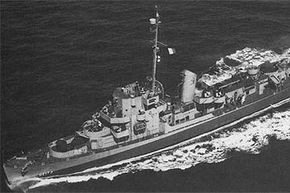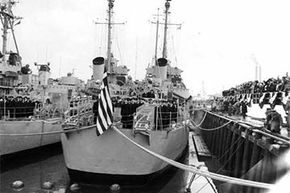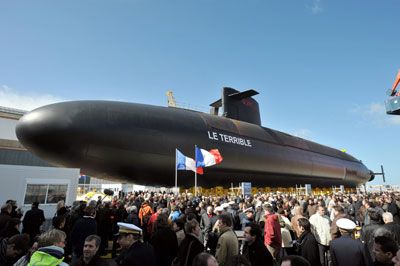It was the summer of 1943, two years into the United States' involvement in World War II, and a bloody sea battle was raging between American destroyers and the famed U-boat submarines of the Nazis. In the Philadelphia Naval Shipyard, a newly commissioned destroyer called the USS Eldridge was being equipped with several large generators as part of a top-secret mission to win the Battle of the Atlantic once and for all.
Rumor aboard the ship was that the generators were designed to power a new kind of magnetic field that would make the warship invisible to enemy radar. With the full crew on board, it was time to test the system. In broad daylight, and in plain sight of nearby ships, the switches were thrown on the powerful generators, which hummed into action.
Advertisement
What happened next would baffle scientists and fuel decades of wild speculation. Witnesses describe an eerie green-blue glow surrounding the hull of the ship. Then, instantaneously and inexplicably, the Eldridge disappeared. Not just invisible to radar, but gone — vanished into thin air!
Hours later, there were reports of the Eldridge appearing in the Norfolk Naval Shipyard in Virginia, before reappearing just as suddenly back in Philadelphia. According to classified military reports, members of the Eldridge crew suffered from terrible burns and disorientation. Most shockingly, a few crewmen were found partially embedded in the steel hull of the ship; still alive, but with legs or arms sealed to the deck.
So goes the story of the Philadelphia Experiment, perhaps the most famous and widely retold example of secret government experiments with teleportation and time travel. More than 70 years later, despite the absence of any physical evidence or corroborating testimony, the Philadelphia Experiment survives as "fact" in the minds of amateur paranormalists and conspiracy theorists.
To understand how the Philadelphia Experiment really worked, we must learn about the men who first brought the closely guarded secret to light, explore the suspicious government response to their revelations and get a very different version of the story from a surviving crewmember of the Eldridge.
Advertisement



